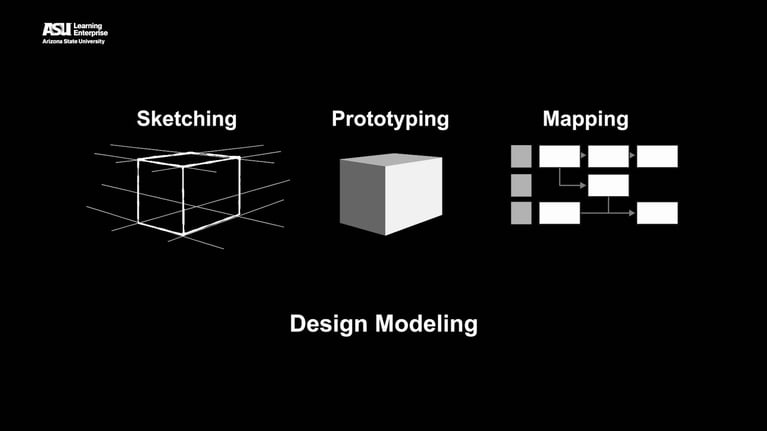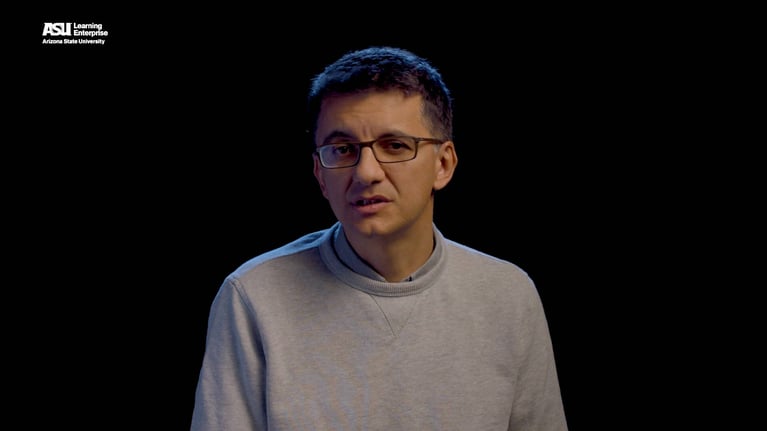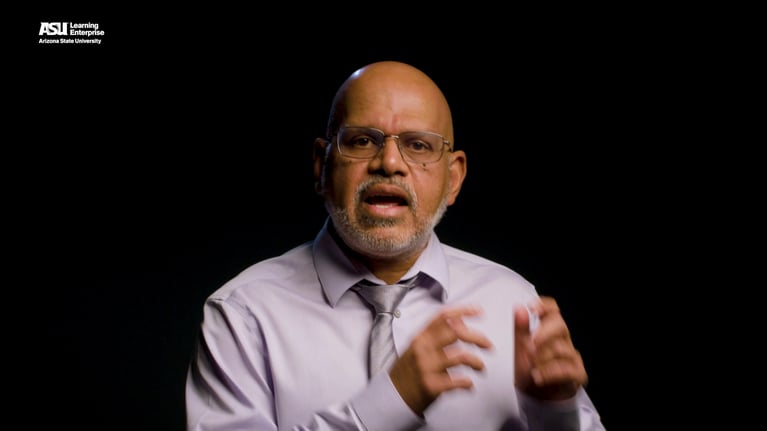ASU Learning Sparks
Think Like a Designer: Unlocking Innovation
In order to think like a designer you must have a vision and engage in dreaming, prototyping, testing ideas, understanding the market, and taking risks. The most innovative entrepreneurs, creatives and deliverers, employ the design thinking process. Creatives think like designers, taking risks and making decisions based on instinct. They integrate ideas, ask effective questions, observe customer behavior, and actively seek new ideas through experimentation. To think like a designer means prioritizing consumer needs, employing a user-centered design approach, and embracing prototyping and testing. It's an iterative process guided by a vision, culminating in a ready-to-market idea.
Thinking like a designer is not just about thinking about design. It’s about thinking with a vision in mind, dreaming, prototyping and testing ideas, understanding the market, and testing.
In 2013, Dyer, Gregersen and Christensen presented a study on innovative entrepreneurs. After studying numerous profiles, they discovered that everyone shares some characteristics.
For this explanation, I have classified them into two main groups: the creatives, and the deliverers.
Let's talk about the creatives.
They think like designers, as described in the book “The Innovator's DNA.” They are curious, always looking for answers. Some of the most recognized innovators are characterized by proposing the "craziest" ideas, having a little irrational instinct, and showing an excess of confidence.
Creative thinkers like designers take risks and measure the consequences, in contrast, a more classical approach will calculate the result and then take the bet.
Thinking like a designer means that you will more frequently make decisions based on heart and instinct than on extensive analysis.
Dyer, Gregersen, and Christensen found that people with this profile were at the top of the most innovative companies (which is a tiny percentage), and their main characteristics were:
They integrate; they connect ideas, forming new associations that lead to new ideas.
They discover; they know what questions to ask and how to ask them effectively.
They observe; they scrutinize their potential clients’ behaviors.
They experiment; they actively seek new ideas by creating prototypes.
Thinking like a designer means using the design process as a problem-solving method to prioritize the consumer's needs above all else.
This method is based on observing people's interactions with their environments, and employing an iterative, hands-on approach to developing innovative solutions.
To think like a designer, you must understand the problem thoroughly and explore various possible solutions. You will iterate through prototyping and testing to look for an implementation of the best idea!
To think like a designer, you might need to place aside your preconceptions and execute creative brainstorming.
To think like a designer means to embrace the entire understanding of the end user, applying what we call user-centered design!
Prototyping and testing are at the core of our design-thinking processes. That's why when we start to iterate and sketch ideas, we will still develop prototypes, make mock-ups, explore, interact, and discover new things.
As designers, we tend to involve customers in all these stages, taking charge of their feedback and avoiding bias. We don't try to think like them; instead, we live, empathize, and analyze how they feel and react, involving stakeholders, partners, and much more if needed! Because we can experiment, fail, and learn what works.
As designers, we like to explore wild ideas first, we participate in brainstorming sessions, holding nothing back.
It's an iterative process in which we search to narrow down to the best ideas and research potential solutions, models, and prototypes. To Design, build, test, and repeat again!
When you think like a designer, you are a visionary concentrating on a creative solution or opportunity; you visualize the future and how the idea will perform once it's implemented.
You have a dream, and now that dream has become a vision, produced, tested, iterated, reiterated, and ready to be moved forward to prepare to go to the market!


